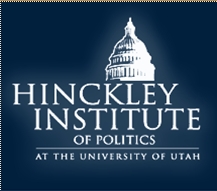U.S. Department of the Interior Bureau of Land Management: The Barriers of Implementing Social Media in Public Policy
Abstract
Given society’s interconnectedness through technology and maturing social media platforms, it is becoming increasingly critical for government agencies to begin shifting from traditional forms of public outreach to modern forms that can reach a larger portion of the public. The integration of the digital native generation into the decision-making processes of public policy is critical for a sound democratic system. This paper describes research performed in the largest government land agency, exploring how the public’s opinion, thoughts, and perceptions are weighed in the decision making process for the people’s land. In this exploratory case study, I theorized that social media has hardly been utilized by the Bureau of Land Management Utah State Office (BLM UTSO) in oil and gas lease sales because the Bureau is not technologically advanced and lacks the proper staff to take on this transformation. This hinders policy from being reflective of public opinion, costing the Bureau more time and money in administrative and legal fees. Using original survey data, I found that several obstacles, such as technological short falls, weak technological skills of BLM staffers, and vague federal regulations, play a part in limiting the ability of the Bureau itself to reach out and evolve.Keywords
Authors who publish with this journal agree to the following terms:
a) Authors retain copyright over their work, while allowing the conference to place this unpublished work under a Creative Commons Attribution License, which allows others to freely access, use, and share the work, with an acknowledgement of the work's authorship and its initial presentation at this conference.
b) Authors are able to waive the terms of the CC license and enter into separate, additional contractual arrangements for the non-exclusive distribution and subsequent publication of this work (e.g., publish a revised version in a journal, post it to an institutional repository or publish it in a book), with an acknowledgement of its initial presentation at this conference.
c) In addition, authors are encouraged to post and share their work online (e.g., in institutional repositories or on their website) at any point before and after the conference.
d) The Author grants Marriott Library the nonexclusive, perpetual, worldwide, irrevocable right to reproduce, distribute, display, publish, archive, preserve, digitize, transcribe, translate, provide access and transmit their work (in whole or in part) for any non-commercial purpose including but not limited to archiving, academic research, and marketing in such tangible electronic formats as may be in existence now or hereafter developed.
e) Marriott Library may elect, in its sole discretion, not to exercise the rights granted herein.
f) Author shall retain copyright in and to the Work and Marriott Library shall provide proper attribution in its exercise of the rights granted herein.
g) Author is solely responsible and will indemnify and hold Marriott Library and/or the University of Utah harmless for any third party claims related to the Work as submitted for publication.


